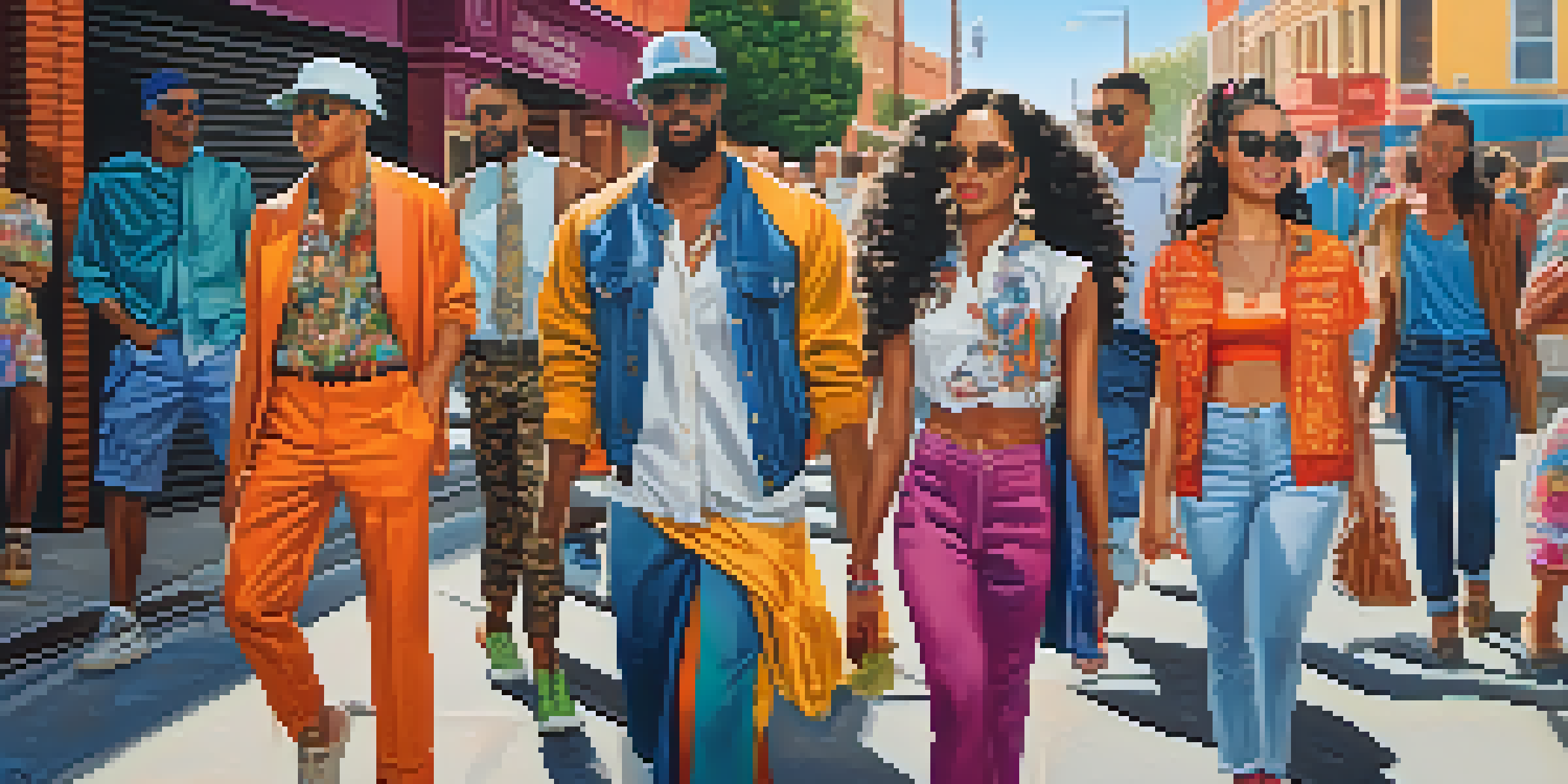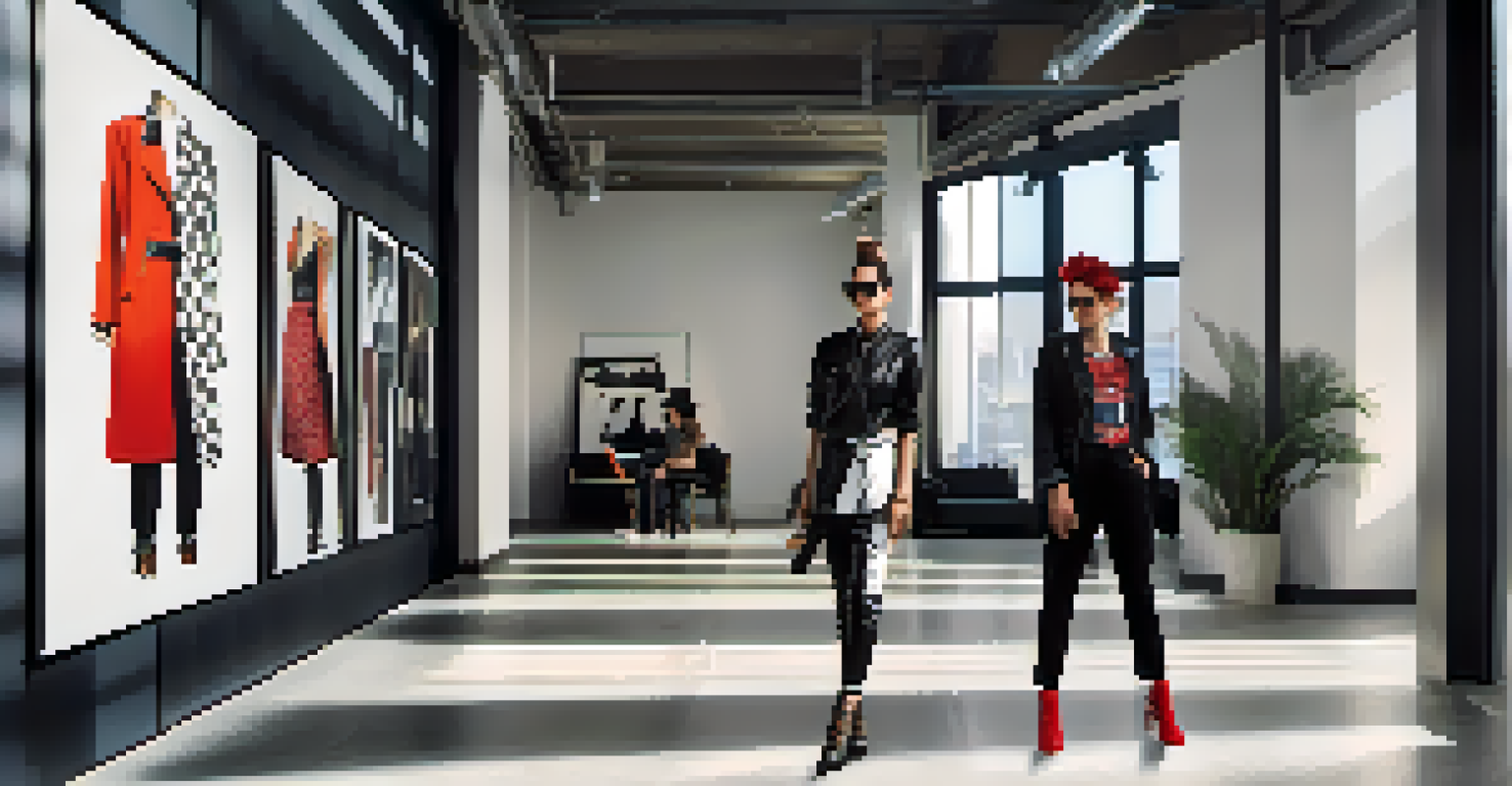Fashion and Self-Identity: A Pathway to Emotional Strength

Understanding Fashion as a Form of Self-Expression
Fashion is more than just clothing; it’s a canvas for self-expression. Each outfit we wear communicates something about who we are, from our mood to our beliefs. When we choose our attire, we are essentially telling the world a story about ourselves, which can be empowering.
Fashion is the armor to survive the reality of everyday life.
Consider how a simple change in wardrobe can lift your spirits. For instance, wearing bright colors might boost your confidence, while comfortable attire can provide a sense of security. This connection between fashion and emotion illustrates how our choices can impact our self-identity.
Ultimately, embracing our unique style allows us to celebrate individuality. By expressing ourselves through fashion, we create a personal narrative that enhances our emotional strength and affirms our place in the world.
The Role of Fashion in Shaping Self-Identity
Fashion plays a crucial role in shaping our self-identity, acting as a mirror reflecting our values and aspirations. The clothes we wear can signify our cultural background, social status, or personal beliefs. This ability to communicate our identity through style is a powerful aspect of fashion.

For example, consider the way certain fashion trends resonate with specific subcultures. From punk rock to minimalist chic, these styles help individuals find belonging and community. This sense of connection can bolster emotional resilience, especially during challenging times.
Fashion as Self-Expression
Fashion serves as a powerful canvas for individuals to communicate their identity and emotions through their clothing choices.
By actively engaging with fashion, we can redefine our self-image and cultivate a stronger sense of self. This journey of self-discovery through style can be both liberating and transformative.
Fashion as a Tool for Building Confidence
Wearing clothes that make us feel good can significantly boost our confidence. When we feel comfortable and stylish, we are more likely to exude positive energy, which can enhance our interactions with others. Confidence in our appearance often translates to confidence in our abilities.
Style is a way to say who you are without having to speak.
Think about a time when you dressed up for a special occasion. That feeling of putting on your best outfit can elevate your mood and make you feel invincible. This phenomenon showcases how fashion can serve as an armor, providing emotional strength when facing the world.
Ultimately, creating a wardrobe that reflects our authentic selves empowers us to face challenges head-on. When we dress for success, we are not just putting on clothes; we are stepping into our power.
The Therapeutic Effects of Fashion and Style
Fashion can also have therapeutic effects, acting as a form of self-care. Engaging in the process of selecting outfits or even experimenting with new styles can be a mindful practice that boosts mental health. This creative outlet allows for self-reflection and emotional release.
For instance, many people find joy in thrifting or crafting their own clothes. These activities can provide a sense of accomplishment and creativity, which can be incredibly rewarding. The act of curating a personal style can bring clarity and purpose, reinforcing a positive self-image.
Confidence Through Style
Wearing clothes that resonate with us can significantly boost our self-confidence and help us face challenges more effectively.
By treating fashion as a form of therapy, we can harness its potential to promote emotional well-being. This playful exploration of style can lead to greater self-acceptance and emotional strength.
Navigating the Intersection of Fashion and Social Media
In today's digital age, social media plays a significant role in shaping fashion trends and self-identity. Platforms like Instagram and TikTok allow individuals to showcase their unique styles, fostering a sense of community among like-minded fashion enthusiasts. This visibility can empower users to embrace their individuality.
However, it’s essential to navigate this space mindfully. While social media can inspire creativity, it can also lead to comparison and self-doubt. The key is to focus on authenticity rather than striving for perfection, allowing personal style to flourish without external pressure.
By cultivating a positive relationship with social media, users can celebrate diversity in fashion and find strength in their self-expression. This balance can reinforce emotional well-being and self-acceptance.
Fashion and Its Impact on Mental Health
The relationship between fashion and mental health is profound and multifaceted. A well-curated wardrobe can serve as a source of comfort, providing a sense of stability during turbulent times. Wearing clothes that resonate with our identity can foster feelings of belonging and emotional security.
Moreover, the act of dressing can be a ritual that sets the tone for our day. When we take the time to dress intentionally, we are signaling to ourselves that we matter. This simple act can boost morale and create a positive mindset, reinforcing emotional strength.
Fashion's Impact on Mental Health
A well-curated wardrobe can provide emotional stability and enhance mental well-being by fostering a sense of belonging and self-care.
Recognizing the influence of fashion on mental health encourages us to be more mindful of our choices. By prioritizing personal style that uplifts us, we can create a supportive environment for our emotional well-being.
Embracing Change: Evolving Fashion and Identity
Fashion is ever-evolving, just like our identities. As we grow and change, so too does our personal style. Embracing this evolution can be an empowering process, allowing us to express different facets of ourselves at various stages of life.
For instance, someone may adopt a more professional wardrobe as they advance in their career, while another person might experiment with bold colors when seeking to express newfound confidence. These shifts are not just about fashion; they reflect our journey and growth.

Embracing change in fashion can lead to greater self-discovery and emotional strength. By allowing our style to evolve, we can cultivate a deeper understanding of ourselves and our place in the world.